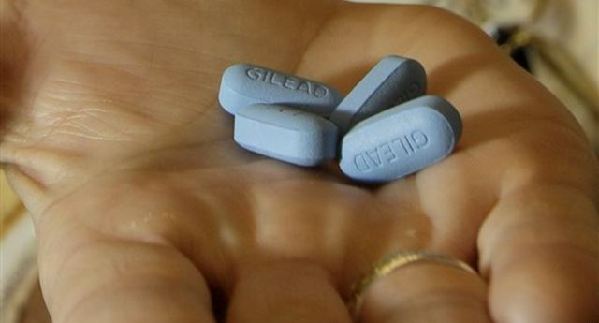
With the success of antiretroviral drugs in treating HIV/AIDS, many infected people are able to lead more normal lives. But treatment is not a cure. A renewed call for a cure was made at the International AIDS Society Conference on Pathogenesis, Prevention and Treatment in Vancouver, Canada.
Nicholas Chomont focuses much of his research on finding where the AIDS virus hides in the body. The University of Montreal associate microbiology professor said even without a cure things are much better today than they used to be.
“Since the isolation of HIV in 1983, we have better weapons to fight HIV infection. And we have better drugs, more drugs. And if you compare the efficacy of these drugs in the pre-antiretroviral therapy era to now, clearly they show higher potency and reduced toxicity. And more importantly, the number of pills that people living with HIV have to take per day has been considerably reduced. And this is clearly a great scientific success.”
He said infected people are living longer and healthier lives.
“If you look at the expected survival of a 20 year old person living with HIV in a high income country between 1995 and now, you would see this dramatic increase in the number of years people can expect to live with HIV drugs. And this life expectancy is actually quite close to one you would see in the uninfected populations,” he said.
Chomont asked with such success why is a cure needed?
“Well, I think there are different answers to that question. So, first, antiretroviral therapy does not eradicate the virus. It greatly reduces the amount of virus in the body, but the virus is still there. Because the virus is still there other issues either appear or persist,” he said.
One of those issues is not a medical one.
“The first one,” he said, “is that the criminalization and the stigmatization of people living with HIV still remain in 2015 in most of the countries in the world. People living with HIV face many issues -- criminalization, stigmatization in their family and at work. For that first reason a cure for HIV is something that we all want to develop.”
Next, while, ART, or antiretroviral therapy, is a huge success, health officials said millions who need it still cannot get it.
Chomont said, “The third reason why we need to do better than ART is that those treatments are actually quite toxic. And, as you know, these drugs have to be administered indefinitely for your lifetime. And we know that they may induce some side effects. More importantly we don’t know what are the long term effects of these drugs for more than 20 years. So, if you need a fourth reason for why we need a cure, I’m going to give you one more. And this is money.”
Chomont uses Canada, as an example, saying, “HIV generates enormous costs in terms of human suffering, job loss and the financial burden on the health care system.” And people who interrupt their drug treatment, for whatever reason, see HIV make a strong comeback.
A cure, he said, would eliminate these problems. But a cure means finding where HIV hides and eliminating it. It’s known that reservoirs can be found in the brain, lymph nodes, the gut and genital tract. Some reservoirs are active, while others are latent or silent, waiting for the opportunity to become active.
They can also hide at the cellular level, especially in what are called memory cells. These white blood cells are part of the immune system. They either directly attack bacteria or viruses or release antibodies.
He said the three main barriers to a cure are HIV-persistent tissues -- latent reservoirs of infected cells that are indistinguishable from uninfected cells -- and diverse types of latent reservoirs.
“There are two main types of cure that I [have] proposed. The first one is the sterilizing cure. This is the ideal model in which you would eradicate all trace of virus from the body. The second type of cure, which is probably more realistic, is what we call, the functional cure. And in that case you would probably also try to reduce the size of the reservoir significantly and then boost the immune system so it can control some events of activation from the latent reservoir.”
Professor Chomont said when antiretroviral therapy is administered soon after infection it can dramatically reduce reservoirs of infected cells. But for the majority of infected people who do not receive the drugs early, new ART strategies are being developed.
One is called the “shock and kill” approach. This would, in a sense, wake-up dormant or latent HIV and cause it to attack cells. But in doing so, it becomes susceptible to antiretroviral drugs. At the same time, the strategy must include a way to boost the immune system so it too can attack the virus.
Until a cure is found ART remains the main weapon against HIV, with new studies showing the earlier it’s given the better. Research also continues on an HIV vaccine. Neither a vaccine nor a cure is expected soon.
来源:VOA
编辑:刘明
上一篇 : Backup Motor May Save Pilots’ Lives
下一篇 :
关注和订阅


电话:8610-84883645
传真:8610-84883500
Email: languagetips@chinadaily.com.cn